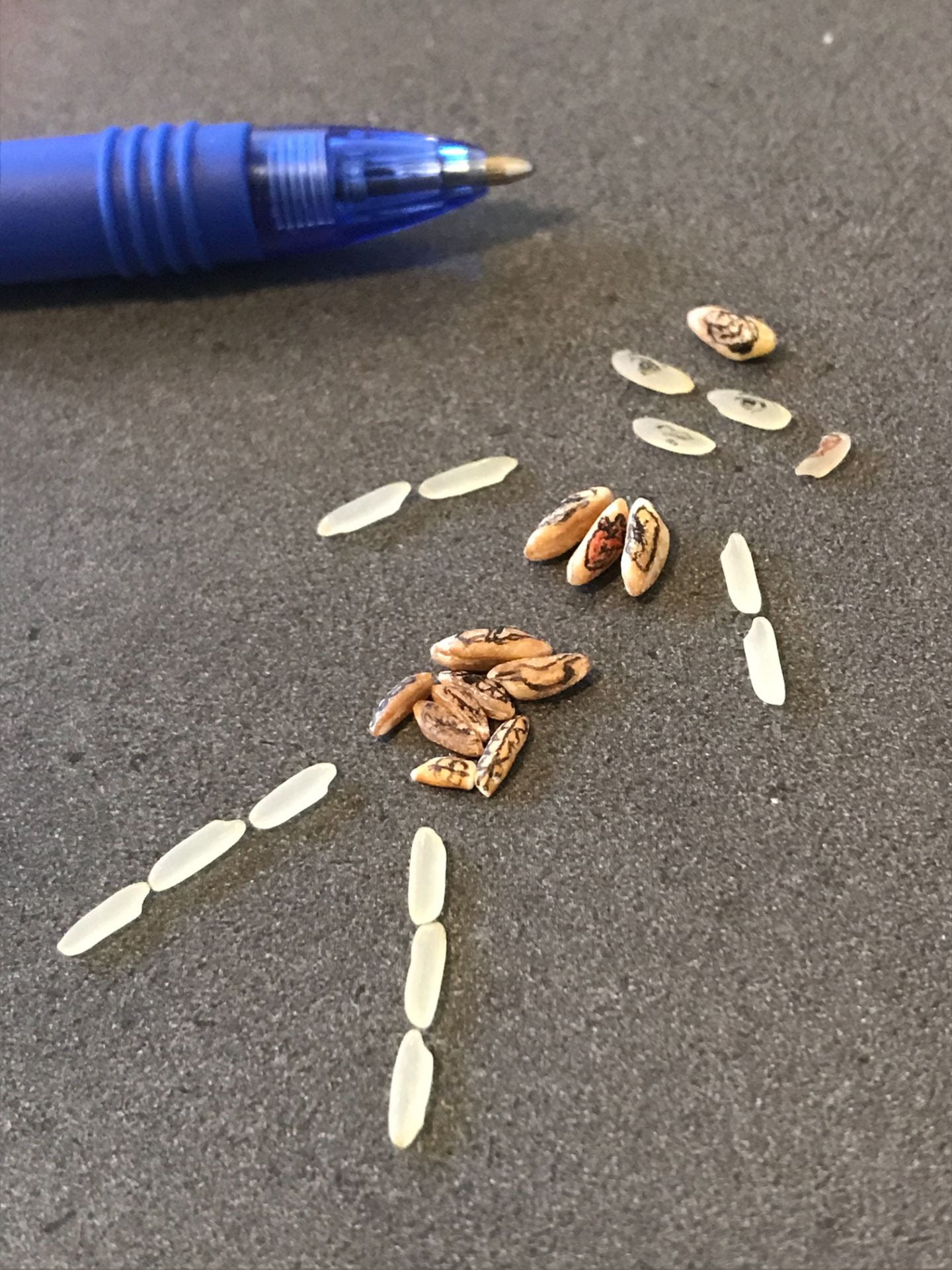Lep-rice-y
Abstract
This piece was inspired by a patient I met who has Hansen’s disease, or leprosy, an infection caused by a slow-growing bacteria called Mycobacterium leprae and mainly affects the skin and peripheral nerves. Because of his condition, mobility in his limbs was restricted, his skin was scarred, and one of his ears was missing.
Too often, outward appearance plays a disproportionately large role in treatment. In an attempt to transcend racial, economic boundaries, as well as neutralize gender, this art offers a body that has been freed from the taxonomy of classification. To grapple with the problem of visibility in medicine, what if we stripped the skin away in an attempt to maximize body visibility? Yet at the same time, acknowledge that a person is more than the sum of their body parts, more than the physiognomy of their illness.
This is a body without skin. The rice grains represent the resiliency of organs and bone. When a human becomes a patient, the medical system punishes them as being non-normative and treats them as a renewable resource that can be exploited. The patient is reduced to a puppet, playing in the dollhouse of racial capitalism.
Similar to The Visible Human Project, which creates cross-sectional photographs of the human body, my art serves as a new lens through which to visualize human anatomy and materiality. This art plays upon Da Vinci’s anatomically visual forms of aesthetic, and Freud’s idea of an uncannily non-concealed, yet private body.
This piece of art is an attempt to equalize all people. Distanced from the skin, this body can be anyone’s. The body then becomes a vacuum into which identity is pulled. My intention is to create a reminder we are all fundamentally the same on the inside, despite outward appearances such as a missing ear. By playing with scale, I hope to celebrate the details in all things ordinary, as the simplicity of functional organs are often overlooked and taken for granted in daily life. By looking at the same organs in different ways, I hope to emphasize the beauty in all things ordinary.
Content 1: Art
My process involves using a fine tip pen to draw out details with my right hand, while I hold the rice grain between the fingers of my left hand. The organs drawn are: brain, eyes, heart, lungs, liver, stomach, large intestine, and small intestine. Other body parts included are: lips and one left ear.
(See title image)
Content 2: Poem
“The Gatekeeper” by Katherine Wu
The gatekeeper,
Enclosing shy organs,
Hugging silent iron posts,
Comforting shapeless fog.
Skin-on shadows approach,
Layering on a second skin,
First polyester white,
Then nitrile blue.
Layering on a third skin,
An invisible barricade.
Because empathy,
like blood,
is a precious, limited resource.
Nameless shadows slice,
Relieving the crying gatekeeper of its duty.
Intimately reconstructing the exterior.
The gatekeeper is reunited.
Protecting a body,
which you own,
Yet is not entirely yours.
A body manufactured,
Packaged with skin.
References
Ebenso, Bassey, Gbenga Adeyemi, Adegboyega O. Adegoke, and Nick Emmel. “Using Indigenous Proverbs to Understand Social Knowledge and Attitudes to Leprosy among the Yoruba of Southwest Nigeria.” Journal of African Cultural Studies 24, no. 2 (2012): 208–22.
Leung, Angela Ki Che. Leprosy in China: A History. Columbia University Press, 2009.
McCurry Justin. “Like entering a prison’: Japan’s leprosy sufferers reflect on decades of pain.” The Guardian, 2016.
Livingston, Julie. Improvising Medicine : an African Oncology Ward in an Emerging Cancer Epidemic. Durham :Duke University Press, 2012.
Ramirez, José P. Squint: My Journey with Leprosy. Jackson: University Press of Mississippi, 2009. Accessed November 14, 2020. doi:10.2307/j.ctt2tvpv3.
Staples, James. “At the Intersection of Disability and Masculinity: Exploring Gender and Bodily Difference in India.” The Journal of the Royal Anthropological Institute 17, no. 3 (2011): 545–62.
Waldby, Cathy. The Visible Human Project: Informatic Bodies and Posthuman Medicine. London, Routledge, 2000.
